Guénon published seventeen books between 1921 and 1946, all of which have gone through multiple editions and remain in print in the original French. Most are also available in Italian and Spanish translation. Many are available in English and Turkish, and some in other languages. A number of these books were based on articles that Guénon had published in earlier years; in addition, ten posthumous collections of Guénon's articles were published between 1952 and 1977. Some of Guénon's correspondence has also been published in various places, but his correspondence was vast and there is at present no prospect of a Collected Letters.
These writings are the heart of Traditionalist theory; some of the later works of Ananda Coomaraswamy are also an integral part of this theory.
Traditionalist theory was developed in a political direction by Julius Evola, and Evola's work was carried further by other political Traditionalists. Further development in a spiritual direction was done by Frithjof Schuon and 24 followers of his, mostly members of his Maryami Sufi Order, who during the period 1940-99 together published some 230 books, nearly all in French, English, or German. 140 translations were made of the more important of these 230 books, making a total of 370 first publications in a variety of languages. In addition there were a number of revised editions, and countless new editions by publishers other than those who had published the first editions of these books and translations.
With a slight dip in the 1980s, production of new titles by Schuon and his followers increases continuously during the last two thirds of the twentieth century. Translations also increase, especially in the 1970s and 1980s, dropping back somewhat in the 1990s, partly as a correction of the 1970s to 1980s jump, and partly as a result of delays in reporting -- some 1990s translations are probably missing from the data used to prepare the charts below.
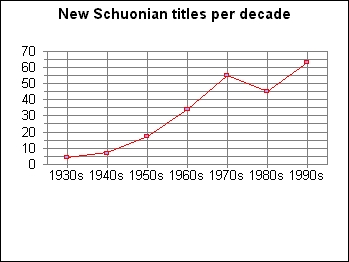
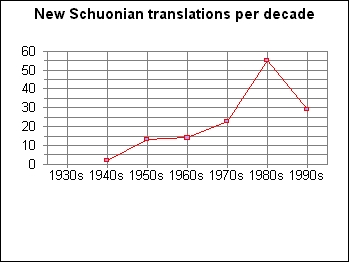
Source: decade analysis .
The picture is more complex, however, if one looks at titles by significance. The total production of new titles continues to increase, but the production of major and important books (for definitions, see key ) peaks around the 1970s and thereafter declines.
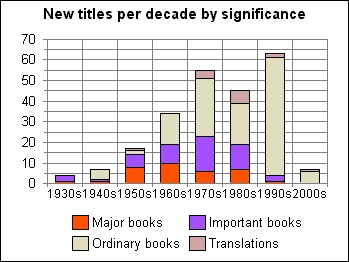
Source: decade analysis .
* Note that "translations" in this chart are translations by Schuonian writers, not translations of works by Schuonian writers.
The dearth of significant books in the 1990s may be only apparent -- such books are identified on the basis of the number of translations into foreign languages, new editions and so on, and a book published in the 1990s has had less time to accumulate these signs of significance than has one published in the 1970s or 1980s. However, a high proportion of all Schuonian publishing and translation has concentrated on the works of only four Traditionalists: Schuon himself, Seyyed Hossein Nasr, Titus Burckhardt, and Martin Lings. Only one of these four major authors was still alive and writing at the end of the 1990s, Nasr.
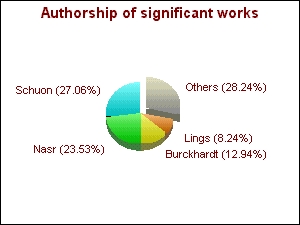
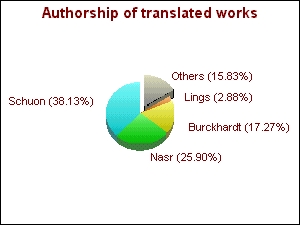
Source: authorship analysis .
The importance of these four authors explains why production of significant works peaked in the 1960s, 1970s and 1980s, the decades of their highest output. During these decades the works of Nasr, a new arrival, filled the gap left by the declining production of the three older major writers, as is especially clear in the category of major works. Interestingly, the 1970s saw an unusually high output of significant works by authors other than the four major writers, a pattern not repeated in later decades.
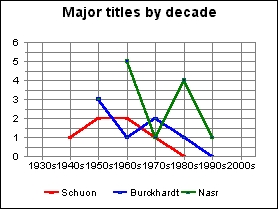
Source: analysis of authorship by decade .
Back to top